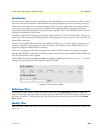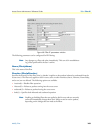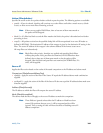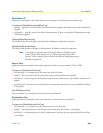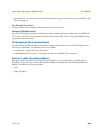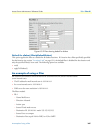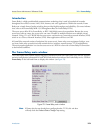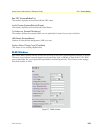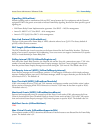
An example of using a filter 168
Access Server Administrators’ Reference Guide 13 • Filter IP
– Protocol: not set
– TCP Established: anyPackets
– Default for dial-in: apply to Dial-in
• ID:2
– Name: WebSite
– Direction: inbound
– Action:pass
– Source IP and mask: not set
– Destination IP: 192.10.10.2 mask: 255.255.255.255
– Source Port: no compare
– Destination Port: equal 80
– Protocol: not set
– TCP Established: anyPackets
– Default for dial-in: apply to Dial-in
• ID:3
– Name:DNS
– Direction: inbound
– Action:pass
– Source IP and mask: not set
– Destination IP: 192.10.10.1 mask: 255.255.255.255
– Source Port: no compare
– Destination Port: equal 53
– Protocol: not set
– TCP Established anyPackets
– Default for dial-in: apply to Dial-in
Note
If the DNS filter was not created, then users would have to use IP addresses
to access the web server and the mail server.
Now if you wanted to add the ability to ping to test the dial-in users connectivity to the network, the following
filter would be created:
• ID:4
• Name: PING
• Direction: both





